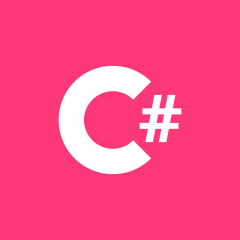在C#或.NET中最糟糕的陷阱是什么?
我最近正在处理一个DateTime对象,并编写了如下内容:
DateTime dt = DateTime.Now;
dt.AddDays(1);
return dt; // still today's date! WTF?
的intellisense文档AddDays()说,它在日期上添加了一天,但实际上并没有-实际返回的日期中添加了一天,因此您必须这样写:
DateTime dt = DateTime.Now;
dt = dt.AddDays(1);
return dt; // tomorrow's date
之前,这已经咬了我很多次,所以我认为对最糟糕的C#陷阱进行分类将很有用。
 红糖糍粑
红糖糍粑浏览 842回答 3
3回答
-

慕尼黑8549860
private int myVar;public int MyVar{ get { return MyVar; }}布拉莫 您的应用崩溃,没有堆栈跟踪。一直发生。(注意使用大写MyVar字母而不是小写字母myVar)。 -

千万里不及你
Type.GetType我看到很多人咬过的是Type.GetType(string)。他们想知道为什么它适用于他们自己的程序集中的类型,而某些类型像System.String,而不是System.Windows.Forms.Form。答案是,它只在当前程序集中和中出现mscorlib。匿名方法C#2.0引入了匿名方法,导致了如下讨厌的情况:using System;using System.Threading;class Test{ static void Main() { for (int i=0; i < 10; i++) { ThreadStart ts = delegate { Console.WriteLine(i); }; new Thread(ts).Start(); } }}那会打印出什么?好吧,这完全取决于调度。它会打印10个数字,但可能不会打印0、1、2、3、4、5、6、7、8、9,这可能是您期望的。问题在于i捕获的变量是它,而不是在创建委托时的值。使用正确范围的额外局部变量可以轻松解决此问题:using System;using System.Threading;class Test{ static void Main() { for (int i=0; i < 10; i++) { int copy = i; ThreadStart ts = delegate { Console.WriteLine(copy); }; new Thread(ts).Start(); } }}推迟执行迭代器块这个“穷人的单元测试”没有通过-为什么不呢?using System;using System.Collections.Generic;using System.Diagnostics;class Test{ static IEnumerable<char> CapitalLetters(string input) { if (input == null) { throw new ArgumentNullException(input); } foreach (char c in input) { yield return char.ToUpper(c); } } static void Main() { // Test that null input is handled correctly try { CapitalLetters(null); Console.WriteLine("An exception should have been thrown!"); } catch (ArgumentNullException) { // Expected } }}答案是,CapitalLetters直到MoveNext()首次调用迭代器的方法时,代码源中的代码才会执行。我的脑筋急转弯页面上还有其他怪异之处。 -

慕田峪7331174
重新抛出异常重新抛出异常语义是获得许多新开发人员的陷阱。很多时间我看到如下代码catch(Exception e) { // Do stuff throw e; }问题在于,它会擦除堆栈跟踪,并使诊断问题变得更加困难,导致您无法跟踪异常的起源。正确的代码是不带参数的throw语句:catch(Exception){ throw;}或将异常包装在另一个异常中,然后使用内部异常获取原始堆栈跟踪:catch(Exception e) { // Do stuff throw new MySpecialException(e); }
 随时随地看视频慕课网APP
随时随地看视频慕课网APP



 C#
C#
 .NET
.NET